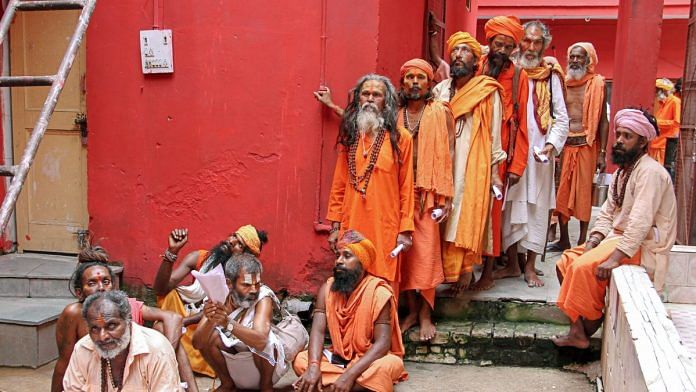Despite terror attacks and natural calamities, the yatra in Kashmir continues to draw lakhs of devotees every year.
New Delhi: The Amarnath yatra began Thursday amid what is seen as the ‘biggest’ security arrangement the annual pilgrimage has seen so far. A total of 40,000 CRPF and state police personnel are set to keep a tight vigil along the route that passes through the violence-hit south Kashmir.
More than 2 lakh devotes have registered for this year’s yatra.
Armoured vehicles will be patrolling both routes – Pahalgam (traditional route) and Baltal (the new route) as intelligence reports suggest terror outfits such as JeM, LeT and Hizbul Mujahideen are planning to carry out attacks on the pilgirms.
The yatra has been a soft target for attacks several times in the past.
How a Muslim shepherd found the cave
Legend has it that Buta Malik, a Muslim shepherd from Batakote in Anantnag, stumbled upon the cave of Amarnath, considered one of the holiest shrines for Hindus, in 1850.
Malik was given a sack of coal by a Hindu sadhu which transformed into gold when he reached home. Overjoyed, he returned to thank the sadhu. Instead he found a stalagmite in the cave, which waxes and wanes with the phases of the moon.
Soon, priests around Pahalgam began treating the stalagmite as the shiva linga (phallic symbol of Lord Shiva). Malik was then rewarded by the king and it was decreed that one of his clan members would always be present alongside mahants in the cave during the months of worship.
The route to the shrine
Pilgrims can opt for any of the two routes to reach the cave, located at an altitude of 3,888 m and about 140 km from Srinagar. The traditional route from Pahalgam takes three to five days (46 kms) to cover. However, a shorter route (14 km) was opened from Baltal, which is a day’s journey to the destination.
The Baltal route is considered safer than the Pahalgam trek, which passes through south Kashmir, a terror hotbed.
Baltal falls in central Kashmir and passes through Sonmarg, a tourist destination.
A unique symbol of communal harmony
The Amarnath yatra is often viewed as a symbol of communal harmony. The route is dotted with various camps where langars (community kitchen) are set up by both Hindus and Muslims for the pilgrims.
In the past, attempts were made by Pakistan-backed terrorists to flare communal tensions through attacks on Amarnath pilgrims, which did not work.
Past hurdles
From unpredictable weather conditions to health problems of tourists to terrorist attacks, Amarnath yatra has faced many hurdles in the past. Here’s a quick recap.
1996: Bad weather and unexpected snowfall killed 243 pilgrims en route to the shrine.
2000: Lashkar-e-Taiba killed 30 pilgrims in the Pahalgam base camp in August 2000.
2001: Thirteen people were killed when terrorists threw grenades and opened fire at pilgrims in Sheshnag in July.
2002: Al-Mansuriyan, a front of the Lakshkar-e-Taiba, attacked the Nunwan base camp in August killing nine people and injuring 30.
2003-2016: The period saw a reduction in terrorist activity on the route with an average of nearly 4 lakh tourists travelling to the shrine each year.
2017: A bus carrying Amarnath pilgrims was attacked by terrorists barely 50 km from Pahalgam, killing seven people.
Environmental concerns
Last December, the National Green Tribunal took suo motu cognisance of the noise pollution near the shrine and passed a slew of directions, including declaring the area a ‘silence zone.’ The tribunal believed that this would be helpful in preventing avalanches and maintaining the cave’s pristine nature.
However, the Supreme Court had in April this year quashed the NGT order saying it had “exceeded its jurisdiction in giving the directions”.



